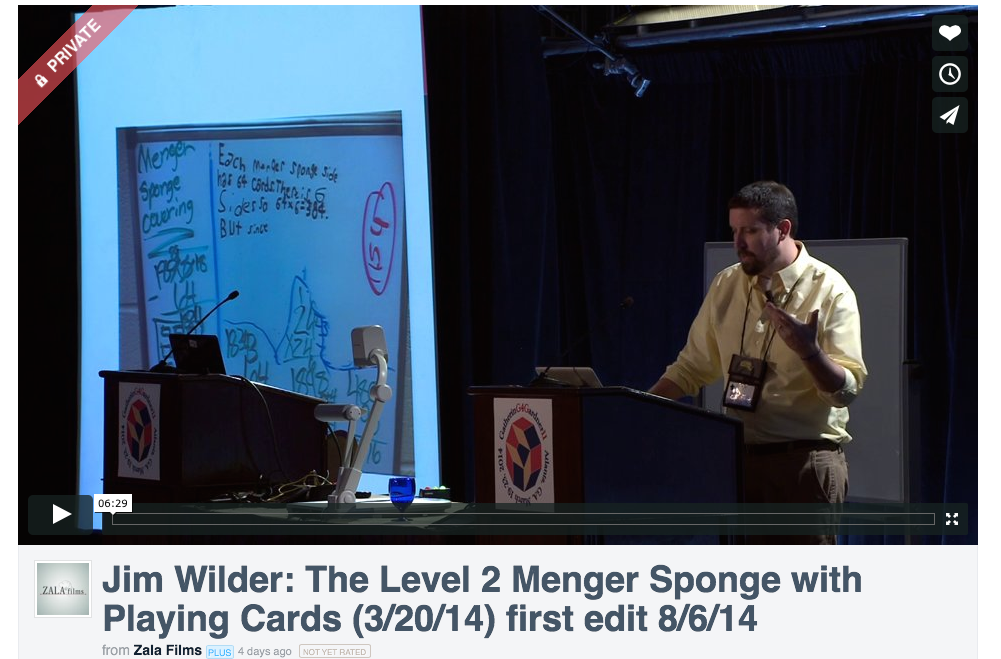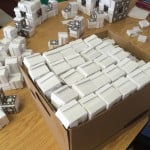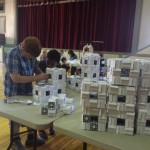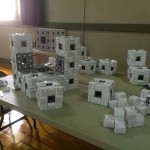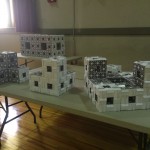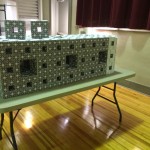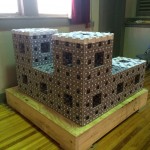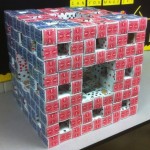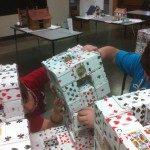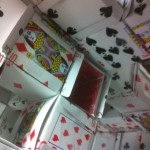MegaMenger Project
This is our MegaMenger team with our Level 3 Menger Sponge after completing our part of the MegaMenger project. This photo appeared in the St. Clair Times.
My students had previously worked with a making a Menger Sponge. However, we built a Level 2 sponge with playing cards after seeing what Dr. Mosely had done with business cards. I spoke about our Level 2 project at G4G11. When the opportunity presented itself approximately 2 years later, we decided to join the worldwide project and build a Level 3 Menger Sponge.
Below I have placed pictures from our Level 3 build that took from the end of September 2014 to early March 2015. Our build was featured on television and in the local newspaper.
See more photos here.
References:
Burch, E. “Odenville Middle School students build Menger Sponge” from ABC3340. http://www.abc3340.com/story/28755114/odenville-middle-school-students-build-menger-sponge Accessed 8 July 2015.
Hanner, G. “Odenville 6th-graders think outside the box” from St. Clair Times. http://www.annistonstar.com/the_st_clair_times/stclair_eedition/page-b/page_e31f82b0-34f6-5fe7-aa4b-ef7a6a23deee.html Accessed 8 July 2015.
Menger Sponge from The Institue for Figuring // Online Mathematical Paper Folding. http://theiff.org/oexhibits/menger02.html Accessed 10 May 2013.
Menger Sponge from WolframAlpha. http://www.wolframalpha.com/input/?i=Menger+sponge Accessed 10 May 2013.
Weisstein, Eric W. “Menger Sponge” from MathWorld–A Wolfram Web Resource. http://mathworld.wolfram.com/MengerSponge.html Accessed 10 May 2013.

